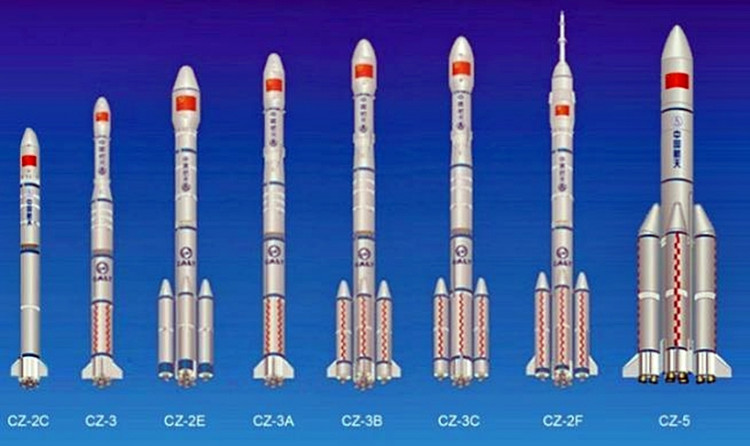China has finally revealed a launch vehicle that will challenge the reusable Falcon 9 series from SpaceX.
China's first reusable launch vehicle has received the designation "Long March 8 (CZ-8)." The first launch for this new rocket is set for 2021, said the China Academy of Launch Vehicle Technology (CALT), the leading launch vehicle manufacturer in China. CALT said both the first stage and boosters of Long March 8 will attempt vertical landings.
China Aerospace Science and Technology Corporation (CASC), which owns CALT, plans to have all of China's launch vehicles transition to reusability by 2035.
Long March 8 will combine the more suitable features of existing Long March rockets. It will have a 3.35-meter diameter core similar to that of Long March 7 (CZ-7). The Long March 8 second stage will have a diameter of three meters and will also be fueled by the liquid hydrogen-liquid oxygen mixture that powers Long March 3A (CZ-3A). Long March 8 will use two solid propellant boosters based on those deployed on Long March 11 (CZ-11).
CALT originally intended Long March 8 as an expendable rocket designed for launching heavy payloads to Sun-Synchronous Orbits. The need to match SpaceX in reusability, a feature that massively decreases launch costs, forced China to evolve a new mission for Long March 8, however.
China has also revealed more information about its new super-heavy-lift rocket, Long March 9 (CZ-9).
Long March 9 will be in a class similar to America's legendary Saturn V rocket that took Americans to the Moon from 1969 to 1972. This rocket, however, will be comparable in capacity to the Space Launch System (SLS) currently being developed by NASA.
SLS is a heavy-lift expendable launch vehicle that will play the key role in NASA's deep space exploration plans, including a mission to land humans on Mars.
Long March 9 will be capable of lifting 140 metric tons to Low Earth Orbit (LEO); 50 tons to Earth-Moon Transfer Orbit and 44 tons to Earth-Mars Transfer Orbit. It will stand 93 meters tall (compared to Saturn V's 110 meters); will have a launch mass of over 4,000 metric tons and will generate close to 6,000 tons of thrust. Saturn V last flew on May 14, 1973.
The Long March 9 core stage will have a diameter of 10 meters while its four boosters will each have a diameter of five meters. First test flight for this rocket is scheduled for 2030. The rocket's first major mission will be a Mars sample return mission at an unknown date.






